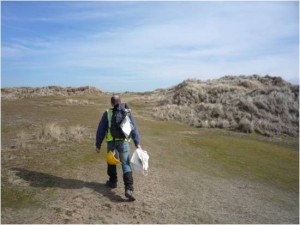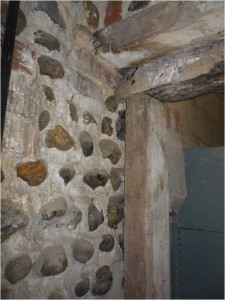2011 – The story so far
This year has been pretty full on so far, with Wild Frontier Ecology being involved in a really interesting variety of projects all over the country. We have also been busy improving our work space, making the second office into a pleasant and convivial meeting place.
Workwise, much of the early season was devoted to reptile and amphibian works, with a lot of staff time devoted to the Broadland Flood Alleviation Project, and two mitigation schemes, one in West Norfolk and the other along a popular stretch of the Norfolk Coast at Burnham Overy.
The latter was a rare chance to work with natterjack toads, a European protected species of restricted range. This slow, warty creeper of the dunes loves to burrow into soft sand, so we had to make sure that areas disturbed by essential sea wall maintenance were natterjack free. An interesting by-catch was a large number of common lizards, removed to the safety of the dunes to prevent killing and injury.
Breeding bird surveys also run in the April to June period, and we were assigned a number of wind farm proposal sites to survey. These proposals are often in intensive farmland, so the yield of interesting bird species can be quite low, although sometimes we are lucky enough to encounter a few goodies. Over the years this kind of survey has picked up stone curlew, crane, woodlark, quail and red-backed shrike, as well as good fistfuls of red and amber-listed farmland birds. This kind of survey is highly skilled, with the surveyor needing to know songs and calls of a large number of species.
This year has seen a definite upturn in the number of BREEAM and Code for Sustainable Homes assessments we have been involved with. These are often brownfield sites, and as the BREEAM credit system is based on the number of plant species present, it is usually to the developer’s benefit that the existing site is not very diverse. However, we do find that most of our clients are very keen to create a positive biodiversity benefit, even on the most urban of sites.
Our Norfolk bat surveys, as well as those in Suffolk and Cambridgeshire, have been turning up a good number and variety of bat species this year. Typically barn conversions or demolition/ rebuilds, the most frequent species are the two pipistrelle species and long-eared bat. The enigmatic barbastelle appears from time to time, although often as a single specimen. Bat surveys on wind farm sites are also rolling on, and we now have an impressive silent army of static detectors for this purpose. Transect surveys with handheld Duet bat detectors are also a regular feature of the wind farm investigations.
Finally, we have also been busy attending the small wind conference in March, giving presentations on small wind developments and ecological risk, contributing to research into Norfolk barbastelles, showing reptiles to members of the public and conducting bat walks.
Looking forward, the autumn is likely to bring a lot more bat surveys, and often a rush of small development projects as they look to get planning permission before the winter sets in. There is often another peak of reptile work in August/ September, while bird vantage point surveys continue, and reports and assessments become more of a priority.
Rob



